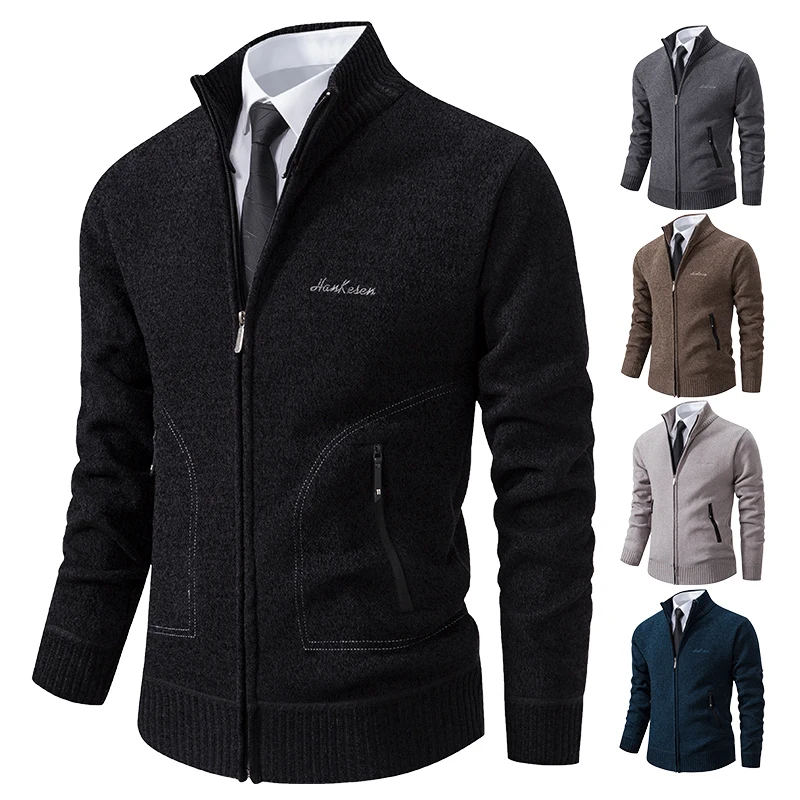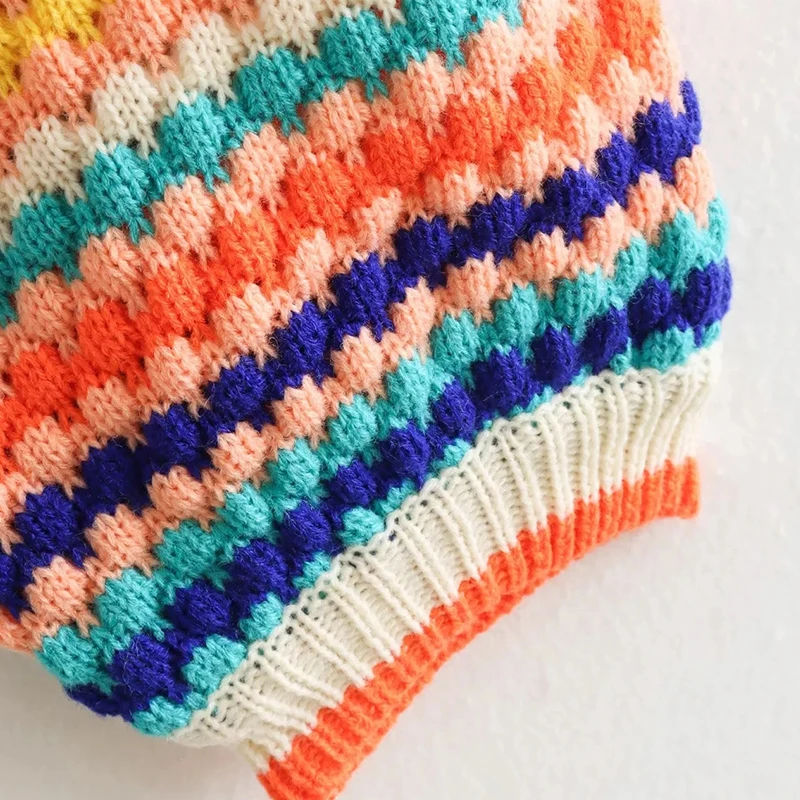Introduction
Cashmere stands as one of the world’s most coveted luxury fibers, prized for its exceptional softness and remarkable warmth. While many appreciate cashmere’s luxurious feel, fewer understand the technical aspects that determine its quality and performance. Among these, gauge is perhaps the most critical yet least understood factor.
Gauge fundamentally influences how warm your cashmere will be, how it drapes on your body, and ultimately, how it performs throughout its lifetime. When you understand gauge, you unlock the ability to select cashmere pieces that perfectly match your needs – whether you’re seeking maximum warmth for winter, lightweight comfort for spring, or versatile pieces for year-round wear.
The importance of gauge extends beyond just warmth. It affects everything from a garment’s weight and appearance to its durability and price. By developing an understanding of cashmere gauge, you equip yourself with essential knowledge to make informed purchases that deliver lasting value and satisfaction.
What makes cashmere particularly special is its remarkable insulation properties. Despite its lightweight nature, cashmere provides approximately 7-8 times more warmth than regular wool of equivalent weight. This exceptional warmth-to-weight ratio makes understanding gauge even more important when selecting styling tips for cashmere cardigans and other cashmere garments.
What is Cashmere Gauge and How is it Measured?
Cashmere gauge, often abbreviated as “GG” in the textile industry, refers to the number of stitches per inch (2.54 cm) in knitted fabric. This measurement directly determines the density and thickness of cashmere garments. The relationship between gauge number and yarn thickness is inverse: higher gauge numbers indicate finer, thinner fabrics, while lower gauge numbers represent thicker, heavier knits.
Definition: Gauge (GG) is the number of knitting needles used per inch on a knitting machine. This determines how many stitches appear per inch in the finished fabric.
The measurement process itself happens during manufacturing, where knitting machines are configured with a specific number of needles per inch. For example, a 12-gauge machine has 12 needles per inch, creating a fabric with 12 stitches per inch. This standardized measurement system allows for consistency across the industry.
In the world of cashmere, gauge typically ranges from 3GG to 21GG, with each increment representing a significant difference in fabric structure:
- Low gauge (3GG-7GG): Creates thick, chunky knits with clearly visible, large stitches. These fabrics have substantial weight and exceptional warmth.
- Medium gauge (8GG-11GG): Produces moderately thick knits with a balance between warmth and flexibility.
- High gauge (12GG-21GG): Results in fine, lightweight fabrics with tiny, barely visible stitches. These knits drape beautifully but offer less insulation than lower gauges.
Understanding gauge becomes particularly important when comparing chunky cashmere to fine cashmere warmth, as the difference in thermal properties can be substantial despite both being made from the same premium fiber.
The Science of Warmth: How Cashmere Gauge Affects Insulation
The exceptional warmth of cashmere comes from its unique ability to trap air, and gauge plays a crucial role in this insulating mechanism. To understand this relationship, we need to examine how thermal insulation works at a fundamental level.
Insulation in any material depends primarily on its ability to create and maintain tiny air pockets. Air is actually a poor conductor of heat, making these pockets excellent insulators that prevent body heat from escaping. Cashmere fibers naturally have a crimped structure that creates microscopic air spaces, but gauge determines how these air pockets are distributed throughout the fabric.
Lower gauge cashmere (like 3GG or 5GG) creates a looser knit with larger spaces between stitches. This structure allows for:
- More air to be trapped within both the fibers themselves and between stitches
- Thicker yarn that contains more insulating fibers per unit area
- A more three-dimensional fabric structure that increases the insulating air layer
The result is significantly enhanced thermal retention. This explains why a chunky, low-gauge cashmere sweater provides substantially more warmth than a fine, high-gauge one, despite using the same quality of cashmere fiber.
However, there’s a common misconception that finer cashmere (higher gauge) is always superior. While finer gauge creates a more elegant drape and smoother appearance, it sacrifices some insulating properties due to:
- Less air being trapped between the tighter, smaller stitches
- Thinner yarn containing fewer insulating fibers per unit area
- A flatter fabric structure that reduces the overall insulating layer
This scientific understanding of heat retention explains why cashmere is warmer than wool of equivalent weight, and why gauge selection should be based on your specific needs rather than an arbitrary notion of quality.
Cashmere Gauge Comparison Chart: From Ultra-Fine to Chunky
To help you visualize and understand the practical differences between cashmere gauges, this comprehensive comparison chart details the characteristics and ideal uses for common gauge ranges:
| Gauge | Fabric Characteristics | Warmth Level | Ideal Uses | Best Seasons |
|---|---|---|---|---|
| 3GG-4GG | Very thick, heavy, chunky visible knit | Maximum warmth | Heavy winter sweaters, outerwear | Winter, extreme cold |
| 5GG-7GG | Thick, substantial, visible stitch definition | High warmth | Winter sweaters, chunky cardigans | Late fall, winter |
| 8GG-9GG | Medium weight, moderate stitch visibility | Moderate to high warmth | Versatile sweaters, everyday cardigans | Fall, winter, early spring |
| 10GG-12GG | Medium-fine, smooth with subtle stitch definition | Moderate warmth | Light sweaters, layering pieces | Spring, fall, mild winter (layered) |
| 14GG-16GG | Fine, lightweight, smooth appearance | Low to moderate warmth | Light cardigans, sweaters for mild weather | Spring, fall, summer evenings |
| 18GG-21GG | Ultra-fine, very lightweight, silky appearance | Minimal warmth | Summer knits, scarves, layering tops | Summer, warm weather |
When selecting your ideal gauge, consider not just warmth needs but also how the weight and drape of the fabric will affect the garment’s appearance and feel. Lower gauge cashmere creates more substantial, structured pieces while higher gauges offer elegant draping and refined movement.

It’s worth noting that personal preference plays a significant role in gauge selection. Some people prefer the cozy, substantial feel of lower gauge cashmere, while others favor the lightweight elegance of higher gauges. For a comprehensive selection of options, browse through our cashmere sweaters collection featuring various gauges to suit different preferences.
The Relationship Between Gauge and Weight in Cashmere
Gauge has a direct and significant impact on the weight of cashmere garments. This relationship creates important differences in how cashmere pieces feel, wear, and function in your wardrobe.
Lower gauge cashmere produces heavier garments for several reasons:
– The yarn used is physically thicker
– More cashmere fiber is used per square inch
– The looser knit structure creates more dimensional bulk
For example, a typical 7GG cashmere sweater might weigh approximately 8-10 oz (225-285g), while a 14GG sweater of identical size might weigh only 5-6 oz (140-170g). This weight difference affects several practical aspects:
- Drape and fit: Heavier cashmere has more structure and less natural drape
- Packability: Higher gauge pieces are more compressible for travel
- Layering potential: Finer gauge works better under jackets or other layers
- Movement feel: Lighter cashmere allows more freedom of movement
Weight can also influence perceived quality and durability. A substantial weight often creates an impression of luxury and longevity, though actual durability depends on multiple factors beyond just weight.
If you appreciate the substantial feel and dramatic silhouette of heavier cashmere, you might particularly enjoy our oversized cashmere sweaters, which often utilize lower gauges to achieve their distinctive look and feel.
Understanding Cashmere Ply: The Perfect Complement to Gauge
While gauge refers to the number of stitches per inch, ply refers to the number of individual yarn strands twisted together to create the thread used in knitting. These two factors work together to determine a garment’s final characteristics.
Common cashmere ply counts include:
- 1-ply: A single strand of yarn, creating the lightest possible fabric for a given gauge
- 2-ply: Two strands twisted together, offering a balance of weight and durability
- 4-ply: Four strands combined, creating substantial weight and maximum warmth
The interaction between ply and gauge creates a wide spectrum of fabric properties. For example:
– A 2-ply 12GG sweater will be lighter and less warm than a 2-ply 7GG sweater
– A 4-ply 12GG sweater might offer similar warmth to a 2-ply 7GG sweater despite the gauge difference
– A 1-ply 7GG sweater could be less warm than a 4-ply 14GG sweater despite its lower gauge
Generally, higher ply counts increase warmth, durability, and quality for any given gauge. This is because more yarn strands create additional insulating layers and structural integrity. However, they also increase weight and cost due to using more raw material.
Premium cashmere items often feature 2-ply or higher construction, even in finer gauges. This adds longevity while maintaining appropriate weight for the intended use. For excellent examples of how ply and gauge work together in practice, our cashmere turtlenecks collection showcases various combinations suited to different warmth needs.
Gauge Selection Guide: Choosing the Right Cashmere for Every Season
Selecting the appropriate cashmere gauge for each season ensures you’ll enjoy both comfort and style year-round. Here’s a practical, season-by-season guide:
Winter (December-February)
– Optimal gauges: 3GG-7GG
– Why: Maximum insulation for cold temperatures
– Best pieces: Chunky sweaters, heavy cardigans, thick scarves
– Layering tip: These substantial pieces work best as your primary layer rather than under tight-fitting outerwear
Spring (March-May)
– Optimal gauges: 10GG-14GG
– Why: Moderate warmth with lighter weight for changeable weather
– Best pieces: Medium-weight sweaters, lighter cardigans
– Layering tip: These gauges work well under light jackets for early spring mornings
Summer (June-August)
– Optimal gauges: 16GG-21GG
– Why: Minimal warmth with maximum breathability
– Best pieces: Fine knit t-shirts, sleeveless tops, lightweight scarves
– Layering tip: Perfect for air-conditioned environments where minimal insulation is needed
Fall (September-November)
– Optimal gauges: 8GG-12GG
– Why: Versatile warmth that adjusts to fluctuating temperatures
– Best pieces: Medium-weight sweaters, versatile cardigans
– Layering tip: These pieces layer beautifully over shirts and under coats

For indoor environments, consider going one gauge range lighter than you would for outdoor wear in the same season. This approach prevents overheating while still providing appropriate comfort. Finding the right cashmere for milder conditions is especially important, and our guide to best cashmere for mild weather offers additional insights on this topic.
Beyond Gauge: Other Factors That Influence Cashmere Warmth
While gauge significantly affects cashmere warmth, several other important factors work independently or in conjunction with gauge to determine overall thermal performance:
Fiber Quality
The grade of cashmere dramatically influences warmth regardless of gauge. Higher-quality cashmere has longer, finer fibers that create more effective insulation. Estate Cloth exclusively uses Grade A cashmere with fibers under 16 microns in thickness, which provides superior insulation properties at any gauge because finer fibers create more numerous and smaller air pockets.
Fiber Length
Longer cashmere fibers (exceeding 36mm) not only reduce pilling but also improve warmth retention. Long fibers create a more stable fabric structure that maintains its insulating properties even after repeated wearing and washing.
Knit Structure
Beyond gauge, the specific pattern of the knit affects warmth:
– Cable knits trap additional air between raised pattern elements
– Ribbed knits create insulating channels that trap warm air
– Tightly knitted structures limit air movement more than loosely knitted ones of the same gauge
Garment Design
The design of a garment can enhance or diminish warmth regardless of gauge:
– Higher necklines retain more body heat
– Ribbed cuffs and hems prevent warm air from escaping
– Relaxed fits trap more insulating air than very fitted styles
For a perfect example of how knit structure enhances warmth, explore our cashmere cable knit sweaters, which demonstrate how textured patterns can increase thermal performance.
Cashmere Wrap Sweaters, Women's Cashmere Pullovers
$75.89 Select options This product has multiple variants. The options may be chosen on the product pageCashmere Cable Knit Sweaters, Women's Cashmere Pullovers
Price range: $111.82 through $112.93 Select options This product has multiple variants. The options may be chosen on the product pageCropped Cashmere Sweaters, Women's Cashmere Pullovers
$155.77 Select options This product has multiple variants. The options may be chosen on the product pageOversized Cashmere Sweaters, Plus Size Cashmere Sweaters, Women's V-Neck Cashmere Sweaters
$136.87 Select options This product has multiple variants. The options may be chosen on the product page- Price range: $108.11 through $130.03 Select options This product has multiple variants. The options may be chosen on the product page
Striped Cashmere Sweaters, Women's Cashmere Pullovers
$139.68 Select options This product has multiple variants. The options may be chosen on the product page
Expert Care Tips: Maintaining Your Cashmere’s Warmth and Quality
Proper care is essential for preserving the insulating properties and luxurious feel of your cashmere, regardless of gauge. Different gauges may require slightly different approaches:
For Low Gauge Cashmere (3GG-7GG)
– Handle with extra care when wet as heavier cashmere can stretch more easily
– Dry flat on a thick towel to maintain shape and prevent stretching
– Store folded rather than hung to prevent distortion from weight
– Expect some natural pilling initially, which typically diminishes after a few gentle washes
For Medium Gauge Cashmere (8GG-12GG)
– Balance between folding and hanging (short-term hanging is acceptable)
– Reshape carefully while damp to maintain original dimensions
– Allow extra drying time due to medium density
For High Gauge Cashmere (14GG-21GG)
– Take special care to avoid snags as finer knits can catch more easily
– Use mesh washing bags to protect during cleaning
– Dry away from direct sunlight to prevent fading of the finer fibers
Universal Care Tips for All Gauges
– Hand wash in cold water with gentle cashmere shampoo
– Never wring or twist; press water out gently
– Avoid direct heat sources when drying
– Store with cedar elements to deter moths naturally
– Brush occasionally with a cashmere comb to remove pills and revitalize surface
When cashmere loses its loft and insulating properties after extended wear, you can often rejuvenate it by hand washing followed by careful reshaping. This process helps the fibers regain their natural crimp and air-trapping ability.
For a comprehensive approach to maintaining your investment pieces, our ultimate guide to cashmere care provides detailed steps to ensure your garments retain their warmth and beauty for years.
Is Higher or Lower Gauge Cashmere Better? Debunking Common Myths
One of the most persistent misconceptions about cashmere is that higher gauge (finer knit) automatically indicates superior quality. This simply isn’t true – gauge is a characteristic, not a quality indicator.
Myth: Higher gauge cashmere is always better quality.
Fact: Gauge is a matter of appropriate use rather than absolute quality. A perfectly crafted 5GG sweater can be just as luxurious and well-made as a 16GG one.
Myth: Low gauge cashmere is less refined.
Fact: Many high-end European luxury brands specialize in chunky, low gauge cashmere that commands premium prices specifically for its substantial hand-feel and dramatic texture.
Myth: Higher gauge cashmere lasts longer.
Fact: Durability depends more on ply count and fiber quality than gauge. A well-made low gauge garment often lasts just as long as a high gauge one.
Myth: The gauge affects price in a linear way.
Fact: While extremely fine gauges (18GG+) often cost more due to specialized manufacturing requirements, price is determined primarily by fiber quality, ply, and craftsmanship rather than gauge alone.
Regional preferences for cashmere gauge vary considerably. European markets traditionally favor lower gauges with textured knits, while Asian markets often prefer ultra-fine, high gauge pieces. American preferences typically fall somewhere in between, with greater seasonal variation.
When choosing cashmere, the right gauge depends entirely on your specific needs, climate, and aesthetic preferences. Creating versatile looks with a cashmere cardigan is possible regardless of gauge – it’s simply a matter of selecting the appropriate gauge for your intended use.
How to Identify Quality Cashmere Across Different Gauges
Recognizing high-quality cashmere requires attention to several key indicators, regardless of the gauge:
The Touch Test
Quality cashmere should feel incredibly soft against the skin with no scratchiness. This applies to all gauges, though lower gauges will naturally feel more substantial while high gauges feel silkier.
The Bounce Test
Gently stretch the fabric between your hands and release. Quality cashmere quickly returns to its original shape thanks to the natural crimp of the fibers. Poor recovery indicates inferior fibers or processing.
The Light Test
Hold the cashmere up to natural light. Quality cashmere has a subtle luster rather than a shiny appearance, regardless of gauge. Even low gauge cashmere should exhibit this characteristic glow.
The Pill Test
Rub the fabric gently between your palms for about 30 seconds:
– Premium cashmere may pill slightly at first but minimally after initial wearing and washing
– Excessive immediate pilling suggests shorter fibers or poor processing
– This test works across all gauges, though results may appear differently
Red Flags Across All Gauges
– Uneven knitting or irregular stitches
– Harsh or scratchy feel, even in thicker gauges
– Excessive shine (suggests synthetic fiber blending)
– Strong chemical odor (indicates poor dyeing processes)
– Price too good to be true (quality cashmere requires quality raw materials)

When evaluating different types of cashmere finishes, our brushed cashmere sweaters collection demonstrates how specialized finishing techniques can enhance the feel of the fabric while maintaining essential quality indicators.
FAQ: Your Top Questions About Cashmere Gauge and Warmth
Is a lower gauge cashmere always warmer than a higher gauge?
Generally yes, but with exceptions. A 7GG cashmere sweater will typically be warmer than a 12GG one made with the same ply and fiber quality. However, a 12GG 4-ply piece might be warmer than a 7GG 1-ply piece due to having more fiber content.
How can I tell what gauge a cashmere sweater is if it’s not labeled?
Look at the size of the individual stitches. Lower gauge pieces have clearly visible, larger stitches you can easily distinguish individually. Higher gauge pieces have tiny, barely visible stitches that create a smooth surface appearance.
Does gauge affect how long cashmere lasts?
Not directly. Durability depends more on fiber quality, ply count, and proper care than on gauge. Both high and low gauge cashmere can be equally durable when well-made and properly maintained.
Is 3-ply 12GG warmer than 2-ply 7GG?
Usually not. Despite having more plies, the finer gauge (12GG) creates less loft and traps less air than the lower gauge (7GG), even with fewer plies. The 7GG would typically provide more warmth.
What’s the most versatile cashmere gauge for year-round wear?
A medium gauge around 10GG-12GG offers excellent versatility. These gauges provide moderate warmth without excessive weight, making them suitable for three-season wear and layering.
Do different body types look better in different gauges?
Yes. Lower gauges add visual bulk, which can complement slender frames but might overwhelm petite or full figures. Higher gauges create a sleeker silhouette that works well on most body types.
How should gauge influence my purchasing decision?
Consider your primary use case: maximum warmth for winter (choose lower gauges), lightweight comfort for transitional seasons (choose higher gauges), or layering versatility (choose medium gauges).
For more specific advice on how to incorporate different gauge cashmere into your wardrobe, our guide to layering cashmere cardigans provides practical styling suggestions for maximum versatility.
What Makes Cashmere Warmer Than Other Knit Materials?
Cashmere’s exceptional warmth-to-weight ratio sets it apart from other knitted materials, regardless of gauge. This remarkable property stems from the unique structure of the cashmere fiber itself.
Unlike regular wool fibers, cashmere fibers possess a distinctive hollow core that traps significantly more warm air. This natural structure creates microscopic insulating pockets throughout the material, functioning like tiny thermos bottles that maintain body heat. When comparing equal weights, cashmere provides approximately 3 times more insulation than regular sheep’s wool.
The crimped nature of cashmere fibers further enhances this insulating capability. Each fiber has natural bends and curves that create additional tiny air spaces, even in higher gauge knits where the stitches themselves are tighter. This means that even fine gauge cashmere provides better insulation than other fibers knitted at an identical gauge.
Additionally, cashmere offers superior breathability across all gauges. The fiber naturally wicks moisture away from the body while still maintaining warmth, creating a microclimate that remains comfortable regardless of activity level. This combination of warmth without overheating makes cashmere particularly valuable for active wear and variable conditions.
These inherent properties explain why many consumers find that cashmere cardigans are worth the investment despite their higher price point – the unique performance characteristics simply cannot be matched by synthetic fibers or standard wools, regardless of the gauge used.







